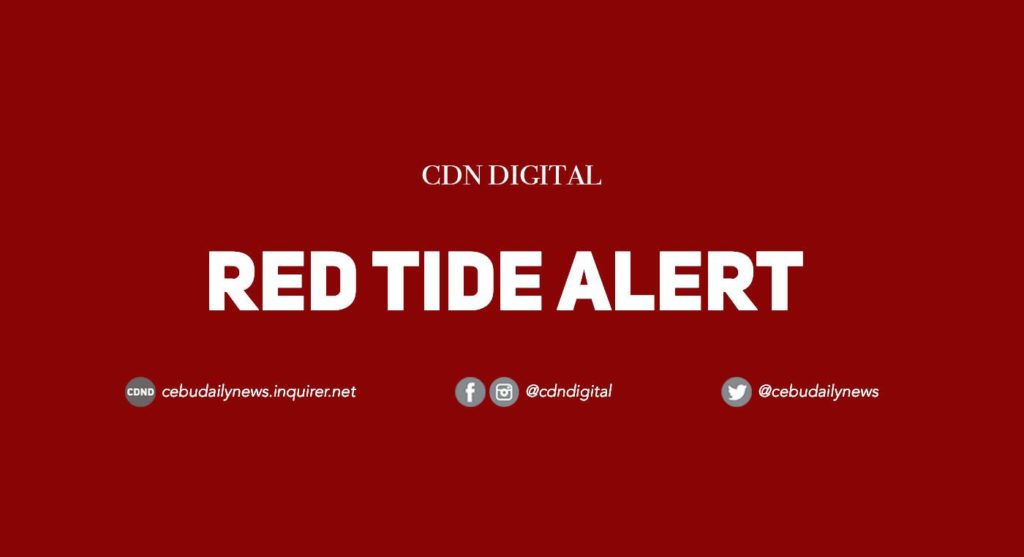CEBU CITY—The Bureau of Fisheries and Aquatic Resources in Central Visayas (BFAR-7) raised the red tide warning in Dauis town and Tagbilaran City in Bohol province.
BFAR-7, in a statement sent to the media on Wednesday, August 14, 2019, called on the local government units to monitor closely the fishing activities in Dauis town and Tagbilaran City in Bohol, particularly the gleaning of shellfishes.
The latest laboratory results from BFAR indicates that “the coastal waters of Dauis and Tagbilaran City in Bohol are still positive for paralytic shellfish poison that is beyond the regulatory limit.”
Meanwhile, Tambobo Bay and Siit Bay of Siaton town and Bais Bay of Bais City in Negros Oriental remain “free from toxic red tides.”
Considering that shellfish products are sold to neighboring islands, Cebu Provincial Fishery Officer Edgardo Delfin said local officials have been instructed to strictly implement the “no take” zone in the red tide-affected coastal waters to prevent these from entering the market.
According to Delfin, the LGUs in the two areas have the responsibility to conduct regular monitoring of the coastal communities in Dauis town and Tagbilaran City.
“There is a possibility (that shellfish with red tide) might be marketed in other areas,”Delfin pointed out. This could cause bigger problems, he added.
Red tide is a common term used to describe a coastal phenomenon in which the water is discolored by high algal biomass or concentration of algae.
It may be harmful or harmless. Red tide is harmless when there is no detrimental effect on the environment, living organisms and humans as well.
However, some cause mass mortality of fish or fish kills while others produce potent toxins such as Paralytic Shellfish Poisoning that are of public or health significance.
Environmental conditions like the intensity of sunlight and change in water temperature, salinity, and nutrient levels may cause red tide blooms.
It may also occur due to the physical concentration of species in a certain area due to local patterns in water circulation.
Red tide can neither be prevented nor can be controlled due to the wideness of the sea, and the effect of controlling red tide to other aquatic organisms.
Red tide usually affects the so-called “filter feeders” like tahong, talaba, halaan, kabiya, litob, wasaywasay, and amahong. These are not affected by red tide but they accumulate the toxins in their bodies.
The person who eats shellfish with red tide toxin may be poisoned by the so-called Paralytic Shellfish Poison.
If a person ingests a contaminated shellfish, vomiting should immediately be induced and the victim should be rushed to the nearest hospital for medical treatment. /bmjo
